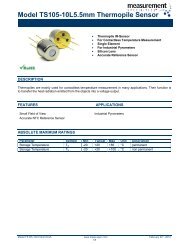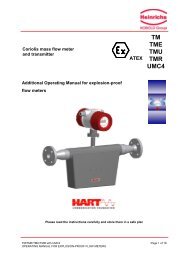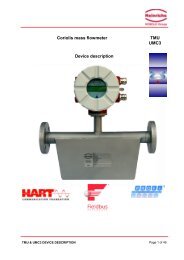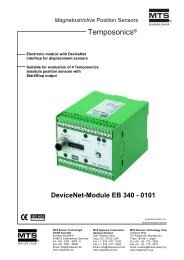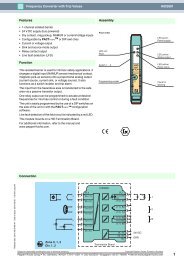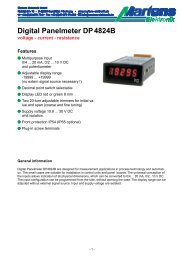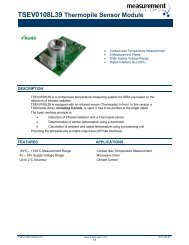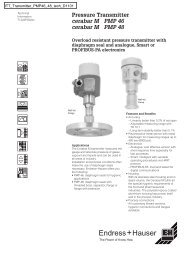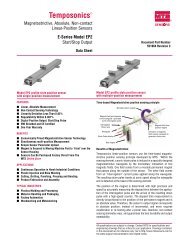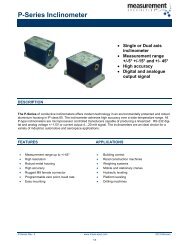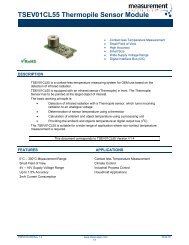CANOpen Manual
CANOpen Manual
CANOpen Manual
You also want an ePaper? Increase the reach of your titles
YUMPU automatically turns print PDFs into web optimized ePapers that Google loves.
3. Device Configuration<br />
3.1. CANopen data transmission<br />
The data transmission in the CAN network is<br />
realised by message telegrams. Basically, these<br />
Telegrams can be divided into the COB-ID and 8<br />
following bytes as shown in the table below:<br />
COB-ID Command Index Subindex Service-/Process- Data<br />
11 Bit Byte 0 Byte 1 Byte 2 Byte 3 Byte 4 Byte 5 Byte 6 Byte 7<br />
3.1.1 The COB-ID<br />
The 11 Bit of COB-Identifier is built as follows:<br />
10 9 8 7 6 5 4 3 2 1 0<br />
Function code Node number<br />
X X X X X X X X X X X X: free selectable<br />
The COB-Identifier determines uniquely the<br />
message object. It is built by the function code,<br />
identifying the message class and the node<br />
number, which determines the inclinometer. The<br />
node number can be adjusted by on customer<br />
request by a SDO.<br />
Following function codes are available: (rx) and (tx) as seen by the master !<br />
Object Function Code (Binary) Result. COB-ID Priority Class*<br />
NMT 0000 0 0<br />
SYNC 0001 128 0<br />
Emergency 0001 129 - 255 0,1<br />
PDO (rx) 0011 385 - 511 1,2<br />
PDO (tx) 0100 513 - 639 2<br />
PDO (rx) 0101 641 - 767 2,3<br />
PDO (tx) 0110 769 - 895 3,4<br />
SDO (rx) 1011 1409 - 1535 6<br />
SDO (tx) 1100 1537 - 1663 6,7<br />
Tabelle 2 Overview priority of the CANopen objects<br />
*Priority: 0 = highest priority, 7 = lowest priority<br />
Low High Low → → High<br />
Page 10 UME-AGS-CAN Version 09/04



